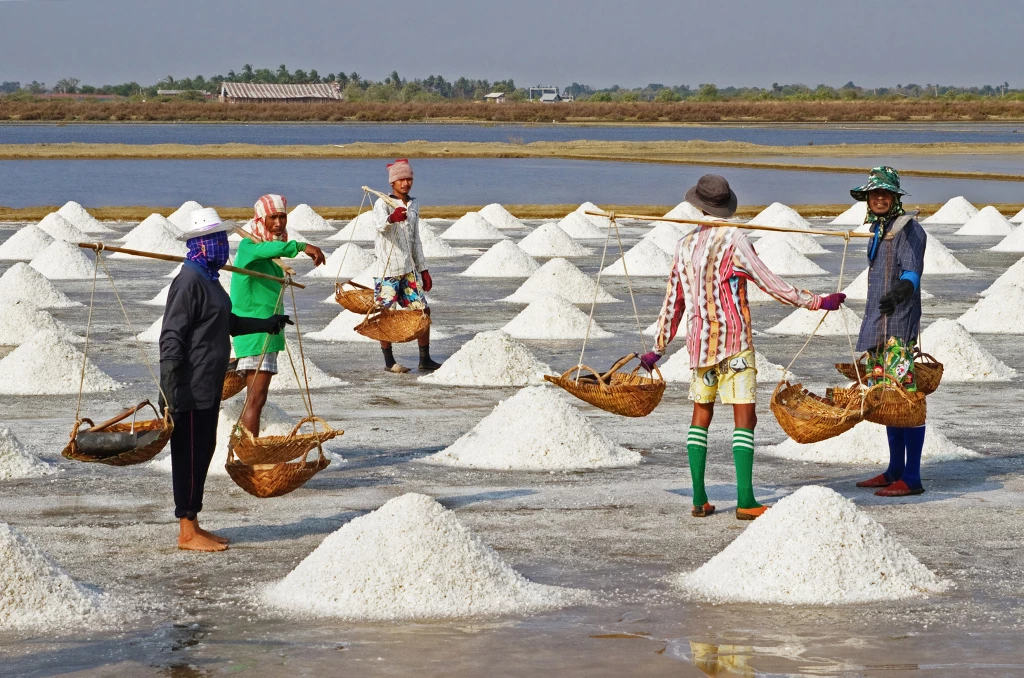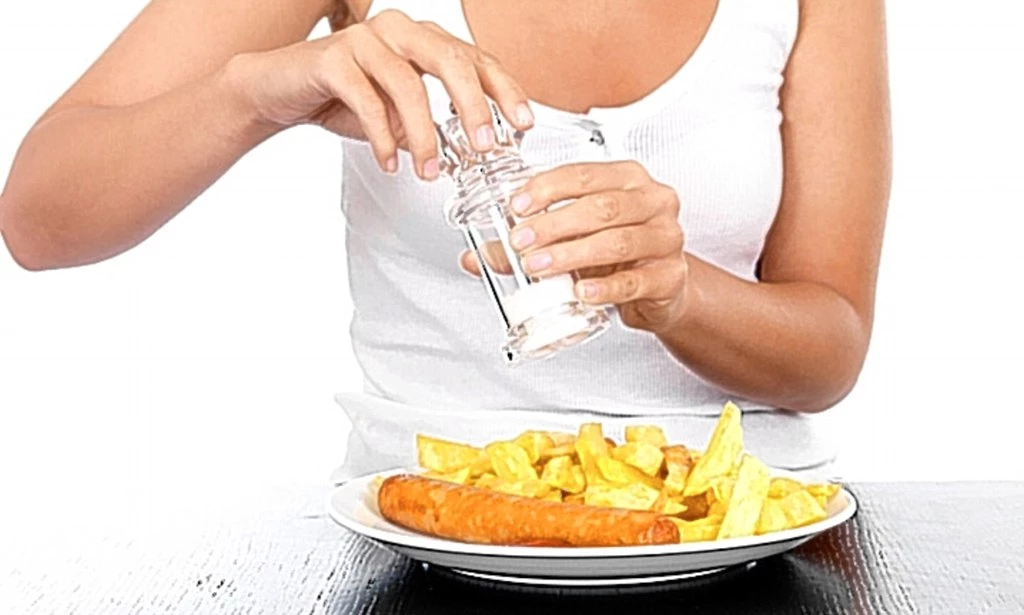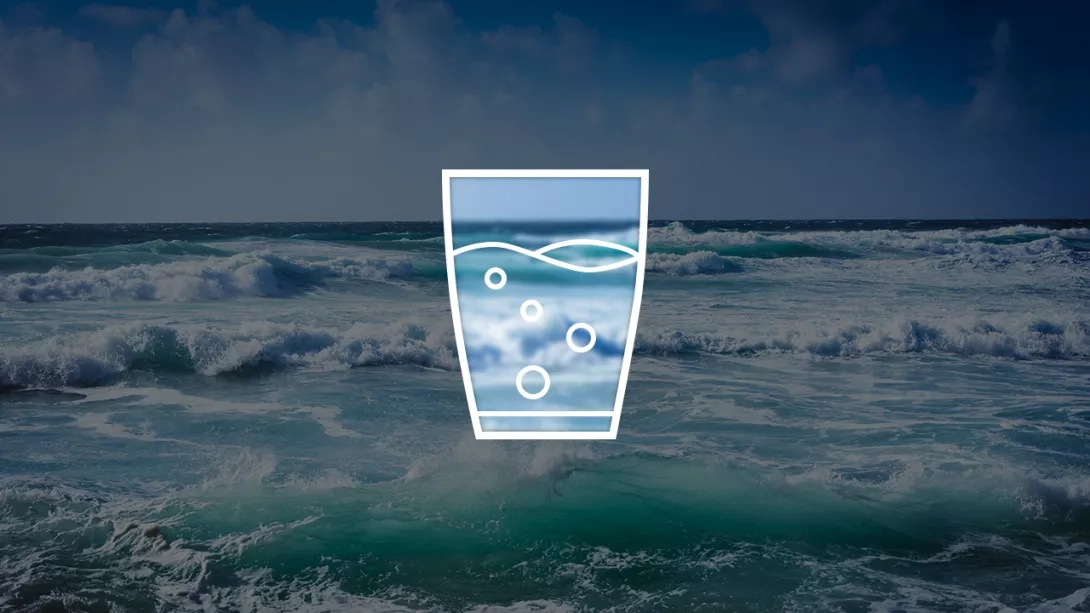For many years now, medical research has confirmed that excessive salt consumption has dangerous consequences: it can increase the risk of stroke, hypertension and kidney failure, is associated with kidney stones and osteoporosis, asthma severity, and can even cause stomach cancer.
Meanwhile, the entire civilized world is trying to reduce the amount of salt in food by limiting concentrations and conducting awareness campaigns, and the Internet is full of recommendations to “drink warm water with salt for 7 days” and “cleanse the intestines with salt.”
Today we'll talk about why you shouldn't drink salt water.
What is table salt and what are its properties?

The main components of ordinary table salt are:
- Sodium chloride (93 - 99.3%) - this is the basic component that has the usual salty taste, at the same time, it is the same component that scientists are trying to limit in consumption.
- Potassium iodide or potassium iodate - additives that are added to salt mainly in regions where there is a problem with iodine deficiency among the population, according to WHO recommendations, all table salt should be iodized.
- Sodium and potassium fluorides are added to water to increase the population's intake of fluoride, which protects teeth from calcium decay and promotes healthy bones.
- Potassium, calcium and magnesium sulfates (up to 2-4%) - often contained in polyhalite, for example, in pink Himalayan salt.
Salt may also contain trace amounts of other minerals: calcium, magnesium, iron, sulfur, etc. The composition of the widely popular Himalayan salt contains only 11 elements (sodium (31%), chlorine (48%), oxygen (11%), sulfur (3.5%), calcium (2.5%), potassium (3%), magnesium (1.3%), silicon, aluminum, iron and fluorine in micro amounts). We did not find an analysis of Artemivsk (Bakhmut) salt, but the official website has information about 86 elements necessary for humans :). To begin with, the entire periodic table contains only 118 elements, of which 29 are artificially synthesized and 6 are inert gases, leaving 83 in total. It turns out that the human body is quite primitive: 11 basic elements, 11 elements involved in biological processes, and 6 more in small quantities also accompany some biochemical reactions.
How is salt obtained?
Rock salt is extracted from underground formations where sediments were formed many thousands of years ago, protected from anthropogenic impact. This includes Artemivsk salt, mined in eastern Ukraine, and Himalayan salt, whose hue is due to the content of trace amounts of iron.
Sea salt is produced by evaporating salt water. It is not particularly useful, as the basic component is still sodium chloride. The principle of its production is based either on the fact that a solution from which crystals precipitate in shallow pools by natural evaporation, or on the fact that such salt is produced by evaporation. The main disadvantage of sea salt is that everything that people dump into the sea will also be present in it: salts of heavy metals, organic substances, etc.

Another method is evaporation of brines, which are obtained by pumping water into salt mines. This method makes it possible to obtain the purest salt (“Extra”), which requires preliminary purification of the solution.
How much salt do we eat?

The recommended daily intake of salt is five grams, which is almost a full teaspoon. It would seem that not every family consumes this amount of salt per day, but in fact, we eat more of it when we buy ready-to-eat food. For example, the salt content of boiled sausage is 1.5-3.5%, semi-smoked sausage is 2.5-4.5%, and raw smoked sausage is 3-6%. The situation with cheeses is no better: varieties with mold contain up to 3.6% salt, feta, parmesan, and cheese spreads about 3%. 100 grams of chips can contain up to 15 grams of salt. In general, the consumption of sodium chloride by adults can exceed even 10 grams per day.
Excessive sodium intake can lead to high blood pressure, and, accordingly, increases the risk of cardiovascular disease and stroke. According to the World Health Organization, consuming the recommended amounts of salt can prevent 2.5 million deaths annually.
Salt water for cleansing the body - truth or myth?

Now let's return from the topic of food to water, this time salt water. Internet recommendations of unknown authorship provide two options for “treatment” with salt water:
- prepare a warm solution containing 1 teaspoon of salt per liter of water and drink it a glass a day for a week, then take a week off and continue;
- prepare five liters of the same solution and drink it in large quantities until diarrhea occurs (called “cleansing the body”).
The authors of the “method” recommend using only sea or rock salt, as it is especially useful. As we have already seen above, all salt has almost the same composition, so we have to deny this claim.
A teaspoon of salt is about 6-7 grams. That is, you get a solution with a concentration of 6 g/l, or 6000 mg/l if you dissolve the salt in distilled water.
To begin with, the maximum salt content for drinking water is 1000 mg/l, which means that such water is not potable. If you consume a glass of salt water a day, you will get about 1.1 to 1.2 grams of pure salt. This is certainly not fatal, but eating a 30-gram slice of parmesan and drinking it with clean water or tea is probably tastier.
As for the so-called “cleansing of the body,” the mechanism works something like this. A concentrated saline solution enters the stomach and then moves to the intestines. Since it is hypertonic (the salt content is higher than that of human tissues), it promotes an osmotic effect - “pulling” moisture from the tissues and liquefying the intestinal contents, which in turn leads to increased bowel movements.
Before the advent of modern safe laxatives, a hypertonic magnesium sulfate solution was often used in medical practice, which caused approximately the same effect. Today, its use is limited to preoperative conditions that require rapid bowel movement and milder and safer agents are more commonly used.
Why drink salt water?

In fact, we do not know the answer to this question. Therefore, we decided to consider the so-called “recommendations”:
- “Water with sea salt is a source of essential minerals”. As we said above, 95-97% of table salt is sodium chloride, and the rest is calcium and magnesium salts, depending on the source of salt, it can also be heavy metals. Taking into account the diet of a modern person, salt consumption is already sufficient, but other important elements are not present in sufficient quantities. Perhaps, only iodine and fluorine, which are added artificially, can be really useful.
- “Salt acts as a natural antibiotic. ”Yes, indeed, at a concentration of 10-15%, saline solutions are used to store meat, leather and other perishable products, as salt can slow down the decay process. The trouble is that to get a 10% solution, you have to dissolve 100 grams of dry product in a liter of water, which is 3 times more than in salt ocean water.
- “Water with salt can prevent osteoporosis and bone fragility.” The calcium content of salt is negligible, but studies show that high sodium chloride intake can increase the risk of osteoporosis.
- “Maintains normal fluid levels”. In fact, the use of salt water can lead to the opposite effect - dehydration. Comparisons with medical saline are not appropriate, as its concentration is only 0.9%, which does not cause a violation of osmotic balance. For this reason, people like to drink salt water for weight loss - in large quantities, it removes fluid, shifting the arrow on the scale downward.
- “Improves the state of the nervous system.” The relationship of salt to the functioning of the nervous system, the release of serotonin and cortisol is also a very interesting question. But salt still has a negative impact on the development of multiple sclerosis.
- “Salt and water helps to thin mucus in the lungs and sinuses and helps to remove phlegm.” If you've read this far, you already know that saline solutions, when taken orally, help to thin out only the contents of the intestines.
We write and read a lot about water, and unfortunately, a lot of information on the Internet has nothing to do with chemistry, evidence-based medicine, or common sense. If some recommendations are just harmless, some can seriously harm your health, so be vigilant and listen to the opinion of evidence-based medicine and science.
Contraindications and consequences of using salt water

When drinking salt water normally, you will simply increase your daily salt intake, and this will most likely not lead to negative consequences, except when people follow a low-salt or no-salt diet.
Things are much more complicated when saline is used for “cleansing the body” or laxative effects. In medicine, sodium chloride is not used as a laxative at all. However, if we consider drugs that work on a similar principle, then acute intestinal diseases, cholelithiasis, arterial hypotension, intestinal obstruction, fever, renal failure, etc. are strictly contraindicated. The consequence of using such products is dehydration, the same as in case of viral or bacterial diarrhea.
Among the common consequences of using hypertonic solutions as laxatives, doctors identify:
- the possibility of pregnancy termination;
- exacerbation of inflammatory processes in the gastrointestinal tract;
- nausea and vomiting;
- water-salt metabolism disorders.
Resources:
- Farez, M. F., Fiol, M. P., Gaitán, M. I., Quintana, F. J., & Correale, J. (2014). Sodium intake is associated with increased disease activity in multiple sclerosis. Journal of Neurology, Neurosurgery & Psychiatry, 86(1), 26–31
- Fatahi, S., Namazi, N., Larijani, B., & Azadbakht, L. (2018). The Association of Dietary and Urinary Sodium With Bone Mineral Density and Risk of Osteoporosis: A Systematic Review and Meta-Analysis. Journal of the American College of Nutrition, 37(6), 522–532
- FoodData Central. (n.d.). FoodData Central. https://fdc.nal.usda.gov/
- Hashem, K. M., He, F. J., Jenner, K. H., & MacGregor, G. A. (2014). Cross-sectional survey of salt content in cheese: a major contributor to salt intake in the UK. BMJ Open, 4(8), e005051
- He, F. J., & MacGregor, G. A. (2010). Reducing Population Salt Intake Worldwide: From Evidence to Implementation. Progress in Cardiovascular Diseases, 52(5), 363–382
- Papp, Zsigmond. (2016). Morphological and Microchemical Characterization of Himalayan Salt Samples. Revue Roumaine de Chimie. 61. 169-174
- Zoroddu, M. A., Aaseth, J., Crisponi, G., Medici, S., Peana, M., & Nurchi, V. M. (2019). The essential metals for humans: a brief overview. Journal of Inorganic Biochemistry, 195, 120–129
- State sanitary norms and rules DSanPiN 2.2.4-171-10 “Hygienic requirements for drinking water intended for human consumption”
- Reducing salt consumption. (2020, April 29). World Health Organization.
- Artemsol State Enterprise (n.d.). “Artemsol.” Retrieved February 6, 2019.
- Morion LLC (n.d.). Osmotic laxatives - ATC classification | Medicines reference book. Compendium.








